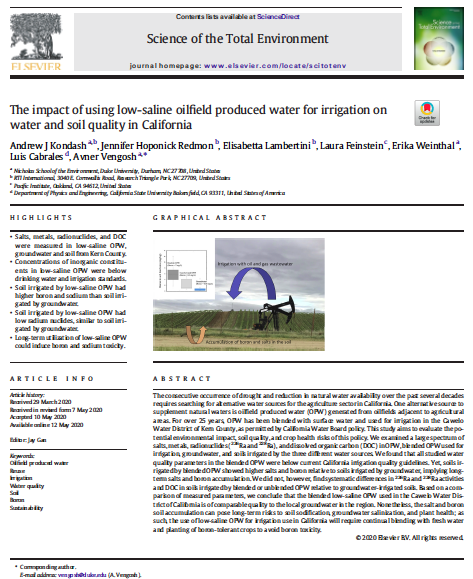The Impact of Using Low-Saline Oilfield Produced Water for Irrigation on Water and Soil Quality in California

The Impact of Using Low-Saline Oilfield Produced Water for Irrigation on Water and Soil Quality in California
Overview
In California, drought and a reduction in natural water availability in recent decades have led to a search for alternative water sources for agriculture. One controversial potential source is oilfield-produced water, a byproduct of oil extraction.
This study, produced by researchers at Duke University, RTI International, California State University-Bakersfield, and the Pacific Institute, examines the potential environmental, soil quality, and crop health risks of blending oilfield-produced water with surface water for irrigation in the Cawelo Water District in Kern County, California. The study finds that salt and boron soil accumulation can pose long-term risks to soil sodification, groundwater salinization, and plant health, and suggest that oilfield-produced water in California be blended with freshwater and used to irrigate boron-tolerant crops.
The study scope was limited to inorganic constituents such as sodium, boron, and naturally occurring radioactive materials.

